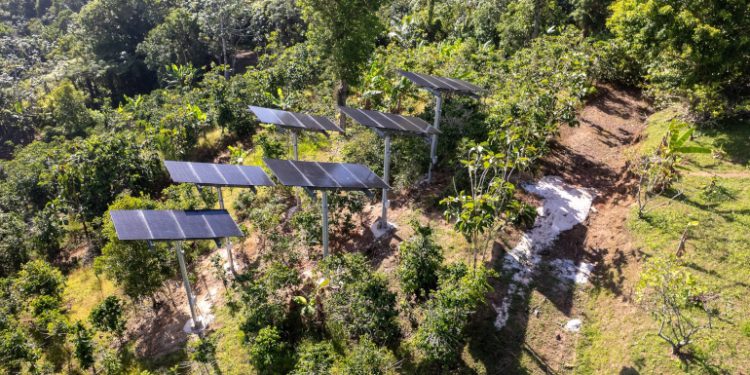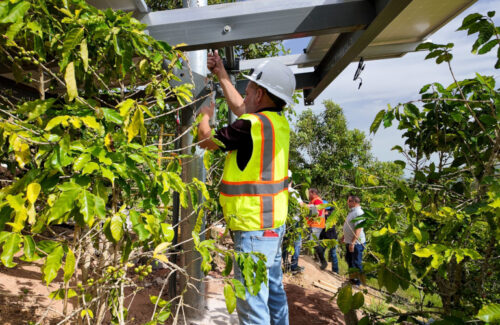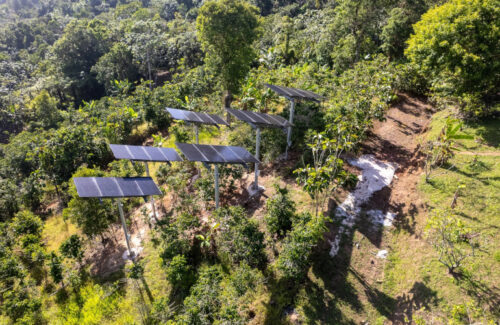Embedded into a mountainside in Adjuntas, Puerto Rico, a new agrivoltaics system could set standards for energy independence in hurricane-prone regions.
Miguel Berdiel, owner of coffee farm Hacienda Berdiel Torres, was dealing with multiple obstructions on what should have been a prosperous farm. Despite optimal coffee-growing conditions and a hydroponic greenhouse, high energy costs and other impacts from Hurricane Maria were stifling growth. The greenhouse’s hydroponics system was eventually shuttered, and plans to offer jobs and locally grown food to the community were halted.
Hacienda Berdiel’s challenges and potential as an agrivoltaics research and climate resilience project aligned with the NREL’s InSPIRE initiative. The organization tapped Oregon-based nonprofit Twende Solar to plan and coordinate a solar installation.
Twende Solar approached MT Solar to design top-of-pole mounts that could be safely and efficiently installed at a 3,000-ft elevation and accommodate all farming operations. The system also needed to resist hurricane-level forces and provide enough capacity to secure Hacienda Berdiel’s energy resources.
“With such high wind loads, we had to tackle some challenges to get a design that allows for high ground clearance above coffee trees. It’s exciting to help our customers achieve their needs even in extreme conditions,” said Jamie Blum, MT Solar design and sales engineer.
The 9.8-kW system was installed in July of 2025. MT Solar subsidized six solar mounts, each holding four 410-W modules 15 ft above the ground. Aireko Energy Group and GRID Alternatives Puerto Rico completed the foundation and system assemblies. Texas-based energy storage manufacturer EG4 Electronics donated the inverter and batteries for a 40-kWh energy bank.
With the system running, Hacienda Berdiel now plans to reopen its greenhouse. Despite energy costs and an unpredictable climate, energy resilience and independence are within its reach.
This system could define standards for ground solar in hurricane-affected regions. To help build a blueprint for comparable installations, researchers will monitor system output and crop productivity over the next two years.
















